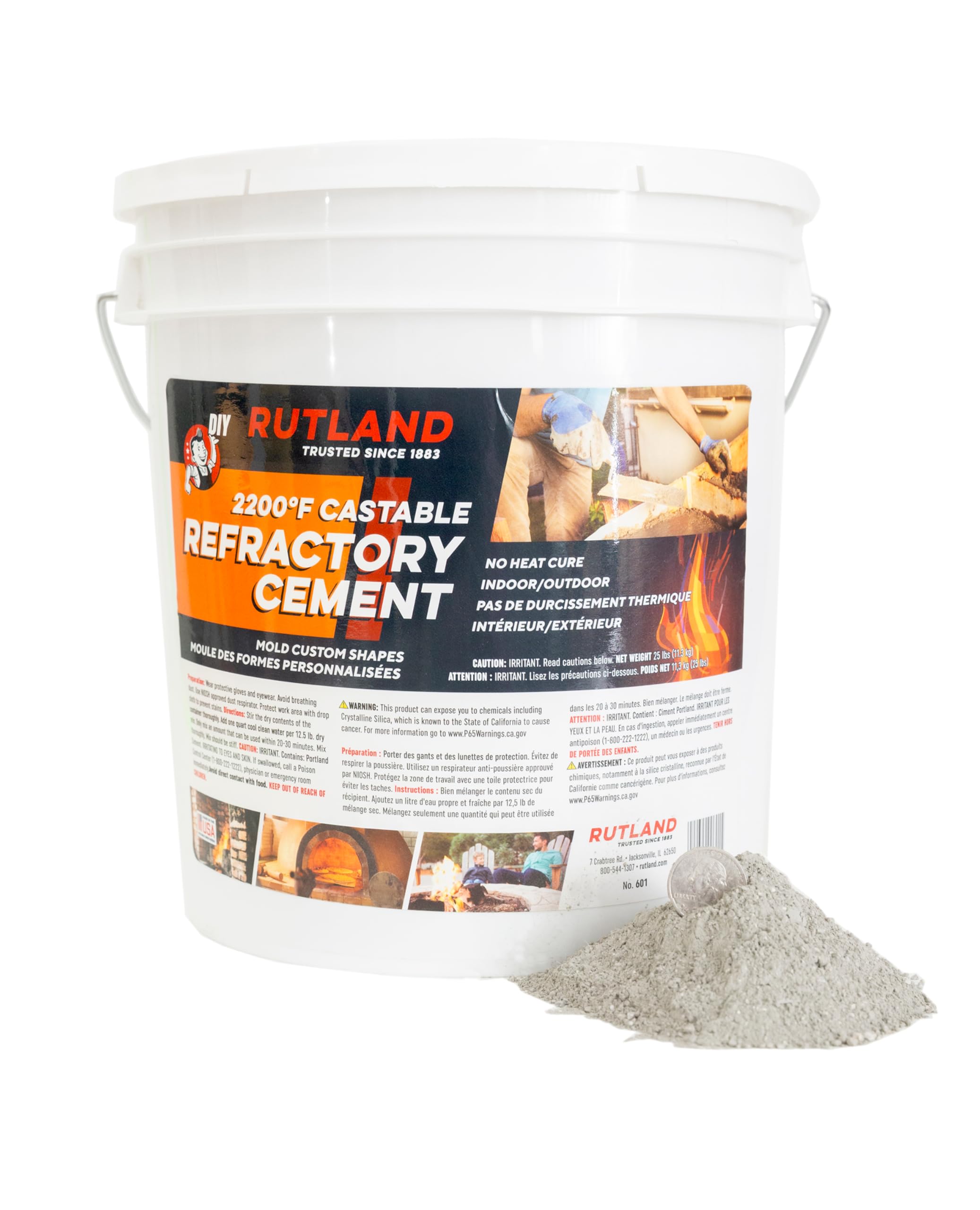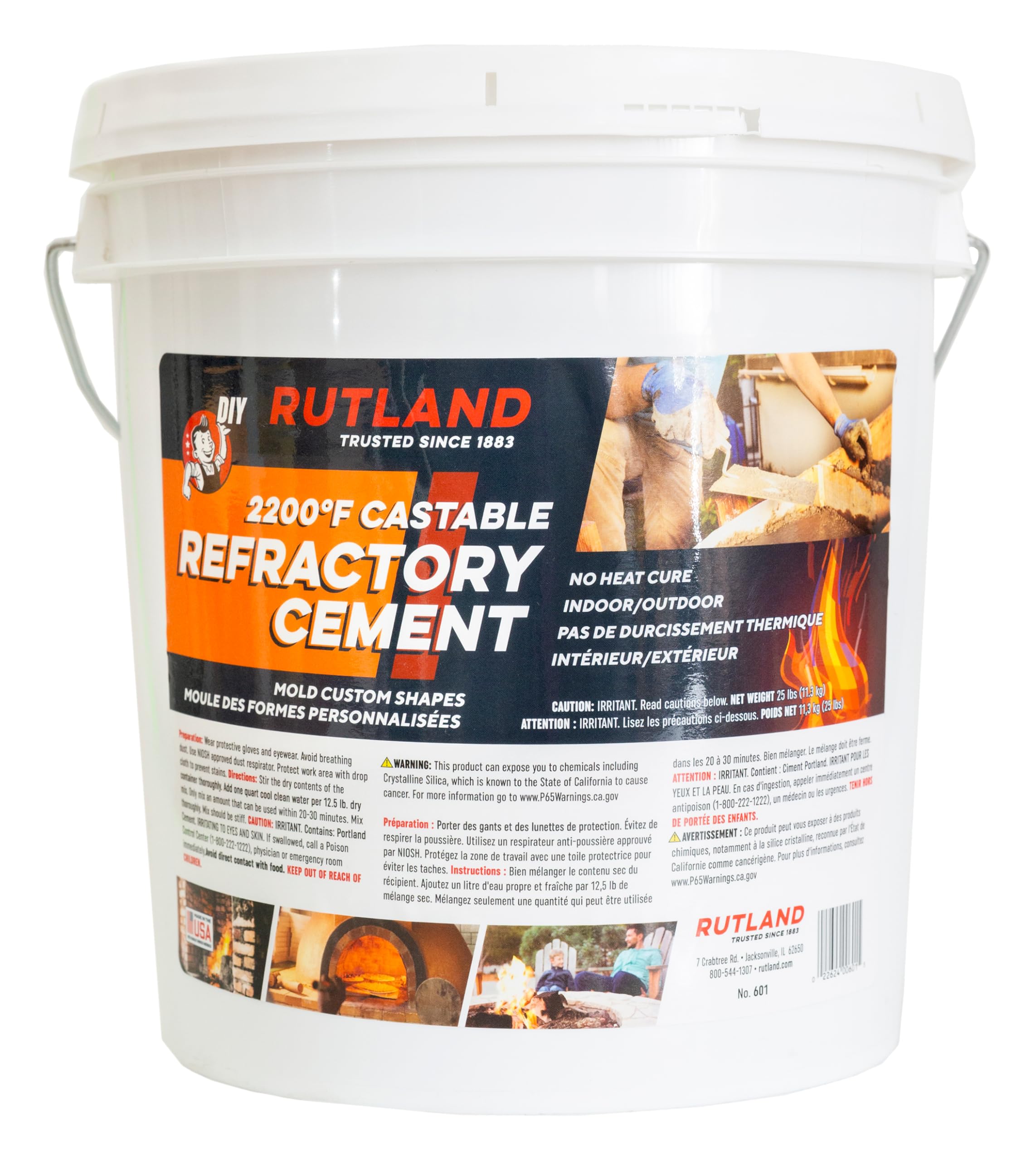






🔥 Mold your heat-resistant masterpiece—because ordinary fireplaces are so last season!
Rutland Castable Refractory Cement is a 25-pound dry mix designed for high-temperature applications up to 2,200°F. Ideal for casting custom firebrick, repairing masonry, and building firepits or pizza ovens, it sets hard without heat curing in just 24 hours. Suitable for both indoor and outdoor use, this strong, taupe-colored cement adheres to masonry and firebrick, offering a durable, professional-grade solution for heat-exposed surfaces.





| Color | Taupe |
| Material Type | Dry mix |
| Volume | 25 Liters |
| Item Package Quantity | 1 |
| Container Type | Pail |
| Full Cure Time | 24 Hours |
| Item Form | Dry Mix |
| Special Features | Strong |
| Specific Uses For Product | Casting, Firepit, Stove, Oven, Masonry, Fireplace |
| Compatible Material | Firebrick |
Trustpilot
1 day ago
1 month ago